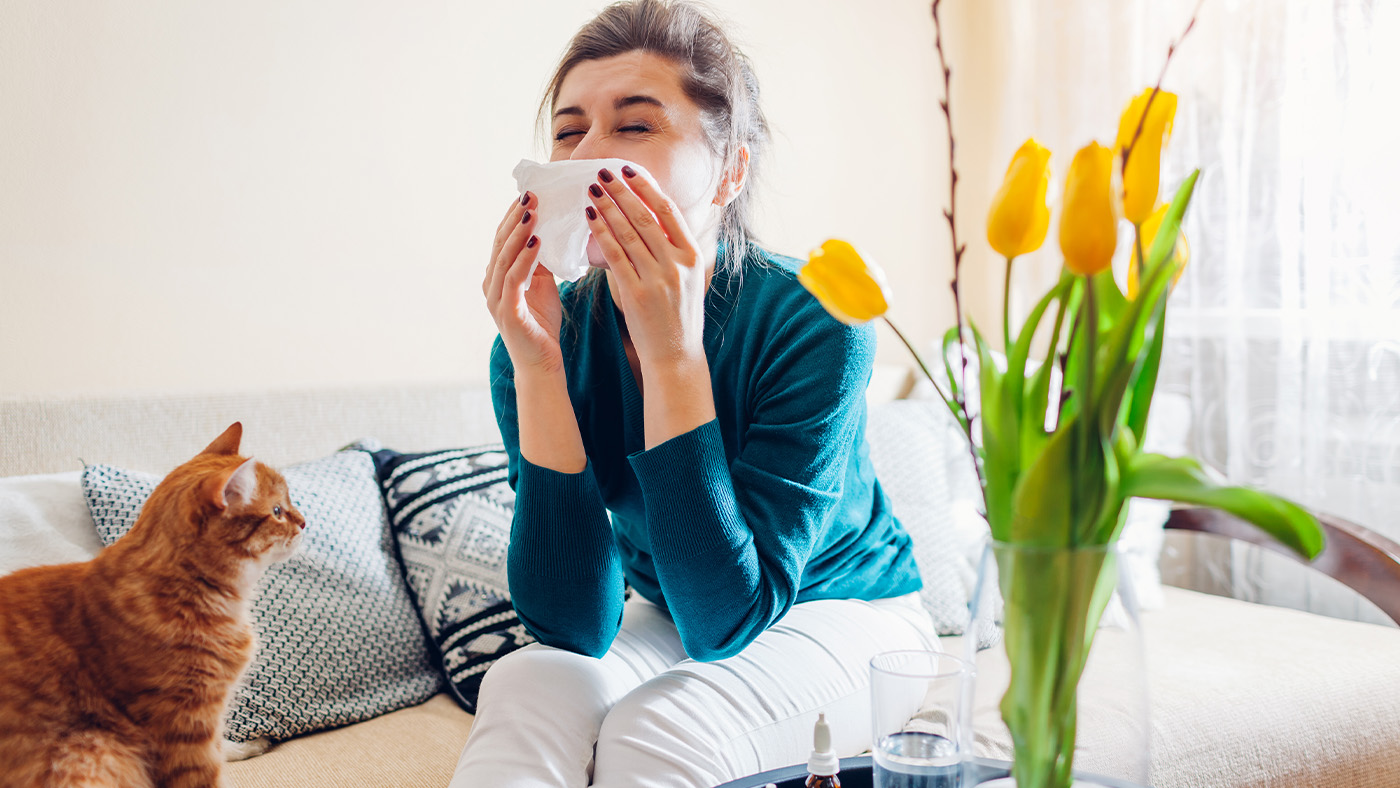Your pets could be making your hay fever worse – here’s what to do about it
If you have dogs or outdoor cats, this advice could help stop you sneezing

When you’re constantly sneezing, blowing your nose, and rubbing your eyes while everyone else around you seems to be having the summer of their lives, it’s no fun at all.
Hay fever can make the summer months seem utterly miserable, particularly during the peak pollen season from late May through to the end of July. But your pets might not be helping.
Max Wiseberg, airborne allergens expert and creator of HayMax allergen barrier balm, explains, “If you have a pet, pollen can stick to their coat, especially if they have long hair. So make sure that you keep them well groomed and shampooed as much as possible to remove pet allergens and pollen particles.
How to prevent pets worsening your hay fever
Wiseberg suggests keeping your pet out of the room you sleep in and off beds and couches, as this will reduce the chance of pollen being transferred. Vacuum your home on a regular basis too, and focus on beds, upholstery, and fabrics in particular.
“Damp dust surfaces – damp dusting will help prevent pollen particles being dispersed back into the air,” he adds. “This also removes dust and pet allergens.”
If you have a dog, it’s a good idea to avoid walking them early in the morning and in the early evening if you can, because this is when the pollen count is at its highest. And, tying your hair up, covering your hair, and wearing wraparound sunglasses while walking them are also good ideas. For their own safety, too, make sure you know when it’s too hot to walk your dog.
“When you get back home after your walk, remove your shoes at the door so you don’t tread pollen around your home,” Wiseberg adds. “And if you change your clothes after being out, this will further reduce the amount of pollen you bring back indoors. Then wash your face to wash away pollen so that it can’t cause a reaction.”
Get the best advice, tips and top tech for your beloved Pets
Using an allergen barrier balm (like this one), as well as keeping on top of your usual nasal sprays, eye drops, and antihistamines, may also help.
What is hay fever?
“Hay fever is a result of our immune system’s overreaction to innocuous antigens such as pollen,” Wiseberg says, “The body’s reaction to pollen is to produce histamines. Normal amounts of histamines in your brain are good – they keep you alert, attentive, and awake. But, when there are too many in your body, they produce the various symptoms common to hay fever sufferers including sneezing, a runny nose, nasal congestion, itchy eyes, watery eyes, streaming eyes, swollen eyes, and an itchy nose and throat.”
So, the main aim when you’re allergic to something is to avoid the allergen. However, it can be more difficult when the allergen is pollen, because it’s in the air around us.
Read next: Can cats have allergies? or 9 tips for coping with allergic pets

Adam is a freelance journalist specialising in pets, music and culture, and mental health and wellbeing. He investigates and writes the large majority of news on PetsRadar, and collaborates with veterinary experts to produce informative pet care content.
Adam has a journalism degree from Southampton Solent University and a masters degree in Magazine Journalism from Cardiff University. He was previously senior editor at dog advice website DogTime.com, and has also written for The Independent, GoodToKnow and Healthline.
He owns two rescue cats, Bunny and Dougie, and has also previously had a rabbit, fish and Roborovski dwarf hamsters.
